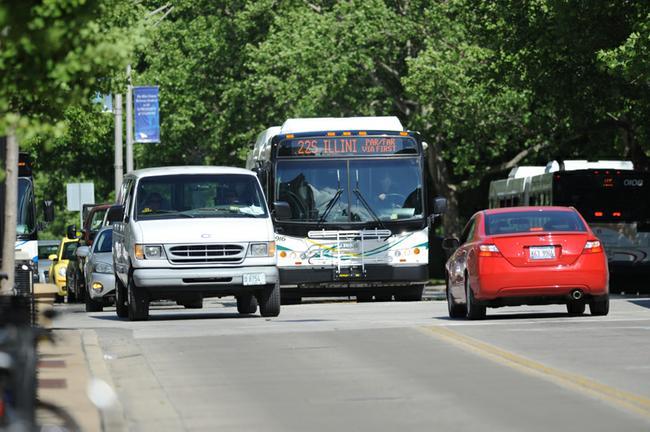Columbia city officials, alternative transportation advocates and student representatives traveled to Champaign, Ill., Friday for the last of three trips taken to explore bus systems in other Midwestern college towns.
Earlier, city officials and student representatives traveled to Ames, Iowa, and Lawrence, Kans.
In both places, they found a transit system that more effectively met riders’ needs, resulting in ridership that far exceeds Columbia’s.
Tiger Transit Movement co-chairwoman Rose Eppensteiner, a senior journalism student, attended the trip to Champaign and said she was very impressed with the “student-centric” system.
The Champaign-Urbana Mass Transit District offers service from 7:30 to 3:30 a.m. Sunday through Thursday and 7:30 to 5 a.m. Friday and Saturday. The routes run on a 10-minute frequency.
“MTD overhauled their transit system in 2009 through their “Extreme Makeover” plan, which created more frequent routes, increased capacity and better evening and late-night service, which are all improvements I would love to see within the Columbia Transit system,” Eppensteiner said in an email.
All three of the cities use a mandatory student fee to partially fund their systems.
Champaign uses a $50 student fee to fund approximately 15 percent of its budget. Sixty-five percent of their budget comes from the Illinois Department of Transportation.
Ames charges a $62 fee and Lawrence charges an $87 fee. Students at MU do not currently pay a fee, but proposals to implement one have been discussed during the past year as the city tries to rectify their transit deficiencies.
Eppensteiner said University of Illinois students’ actions clearly show they are satisfied with the system they receive. Recently students approved a gradual fee increase during the next three years and a representative of MTD told them many students choose off-campus living based on bus route access.
“Students want to take the bus and go so far as to choosing where they live based on that factor alone,” Eppensteiner said.
She said the expanded hours the system provides fits students wants and needs, making the fee worthwhile.
Eppensteiner said receiving 65 percent of their revenue from the state gives Champaign’s system a huge budget advantage.
“I wouldn’t say the Champaign-Urbana system is beyond what Columbia can attain, but it would undoubtedly take significant time and resources to have a similar transit system in Columbia,” Eppensteiner said.
The MTD has more than 10 million riders each year, compared with less than 3 million for Columbia. The MTD operates on a roughly $33 million budget, compared with less than $5 million for Columbia Transit. Additionally, the MTD has a fleet of more than 100 buses, as well as para transit vehicles, while Columbia only has around 30.
As the trio of trips has concluded, the conversation regarding transit is ongoing. The Tiger Transit Movement, Missouri Students Association and PedNet are hosting a Campus Transit Conversation at 7 p.m. Tuesday in Room S016 of Memorial Union.
They will be collecting student feedback on the current bus system, getting ideas from the student body and having discussions about the future of Columbia’s transit system.
The City of Columbia could not be reached for comment on the Champaign trip.








